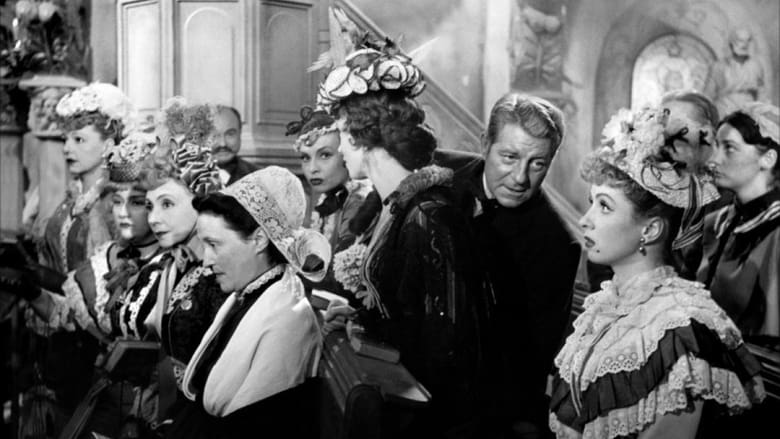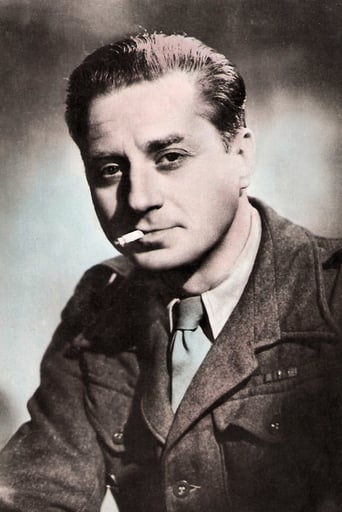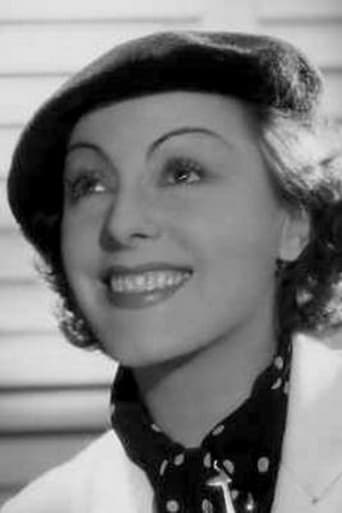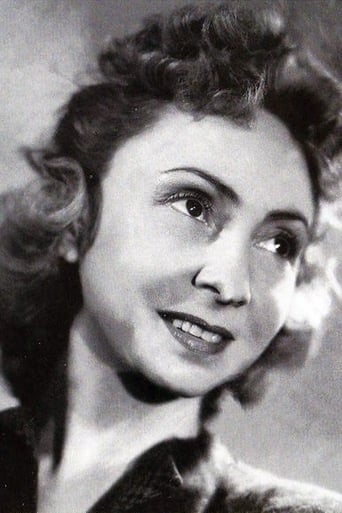

Le Plaisir (1952)
Three stories about the pleasure. The first one is about a man hiding his age behind a mask to keep going to balls and fancying women - pleasure and youth. Then comes the long tale of Mme Tellier taking her girls (whores) to the country for attending her niece's communion - pleasure and purity. And lastly, Jean the painter falling in love with his model - pleasure and death.
Watch Trailer
Cast


Reviews
Truly Dreadful Film
For having a relatively low budget, the film's style and overall art direction are immensely impressive.
Like the great film, it's made with a great deal of visible affection both in front of and behind the camera.
The best films of this genre always show a path and provide a takeaway for being a better person.
The screen is pitch black and we hear a voice..."I'm so happy to be talking in the dark as if I were beside you, and maybe I am." The speaker is Guy de Maupassant (voiced by Jean Marais), and Le Plaisir is three of his stories filmed by the great director Max Ophuls. The connecting thread? That pleasure, or even love, lies in how people intermingle their lives, with a shrug, assumptions, an apology, a thank you. Le Plaisir is not so much a sophisticated film of attraction and hope as it is a film of rueful wisdom. It's best to keep in mind while watching this movie that while life can be enjoyed, there are times when hope can disappear. The three stories consist of, first, La Masque. We are in 19th Century Paris at the Palais de la Dance, where great, swirling balls are held. This is a place where young women hope to find pleasure and rich men; where old women chase memories and young suitors; where prostitutes and their pimps gather, where the men are young bucks and old goats, where "rough cotton to the finest cambric" can combine. One slender man in full dinner dress rushes into the palace and begins to dance with a beautiful young woman. He prances and kicks, yet his face is like a frozen mask of youth. He collapses on the dance floor and a doctor is called. When the doctor loosens the man's clothes, he finds...well, let's say that when the man is delivered home to his wife by the doctor, she tells him a story of the battle between pleasure and love. In La Maison Tellier, we learn all about a cozy, friendly and long established brothel in a small town on the Channel coast. The bourgeois men of the town are as well-known there as they are to their wives. Then Madame decides to close her establishment for a night so that she and her girls can travel into the countryside to attend her niece's first communion. They have one or two adventures on the train. In the small village they spend the night with Madame's brother and meet the young girl. They attend the communion in the village church. They collect flowers on the way back, and are met with genuine affection and with great gaiety when Madame reopens her place of business the following night. We witness a touching story, as de Maupassant tells us, when pleasure and purity come together. Le Modele gives us a story where pleasure struggles with moral decay, where "happiness is not a joyful thing." We witness a painter and his model meet, rapturously embrace lust and, as lust tires, recrimination grows. The love which endures as the story plays out may not be most people's idea of happiness. This is a marvelously told series of stories. La Masque and Le Modele are relatively short bookends to the major tale of La Maison Tellier. With this one, it would be difficult not to become delighted and engaged with Madame and her girls and her brother. Even the puffed up townsmen are not without a sympathetic side; which man among us wouldn't mind being flattered, even for a price, by Madame's girls?
Max Ophuls is rightly regarded as a major filmmaker and this is a major work. If you'd heard of his fluid camera-work but hadn't seen a film bearing his signature this film would illustrate perfectly what people mean by his fluid camera-work. In 1952 the portmanteau film was hardly new; in England we had seen both Quartet and Trio (a joke in the early fifties had two hippies walking down Broadway and passing in turn cinemas where these titles were playing: One says 'Man, we better dig this crazy combo, it's fading fast') followed by Encore, all featuring short stories by Somerset Maugham but it's fair to say that all three lacked the visual style and sheer sumptuousness that Ophuls brings to DeMaupassant. Framed by The Mask and The Model the piece de resistance is The House of Madame Tellier, a four-reel examination of the role of the bordel in the provincial town - when they close for a day the whole sub-social life of the town is disturbed. If the lion's share of the plaudits go to the middle segment the others have more than their own individual moments and staples of French cinema like Jean Gabin, Danielle Darrieux and Simone Simon get to strut their stuff and pay their dues. A visual delight.
One of Max Ophuls' finest achievements,one of the best Guy de Maupassant adaptations for the screen.This is a movie made up of three sketches;it is rather a long story (la maison Tellier) framed by one prologue (le masque) an an epilogue (le modèle).Guy de Maupassant is ,by far,the best writer France as ever known,as far short stories are concerned-He wrote about 200 of them,and even influenced Dudley Nichols for the screen play of "stagecoach"(actually ,Claire Trevor was Boule de Suif)Le plaisir (the pleasure) is something fleeting,but the hero of the prologue(le masque) can't stand life is passing him by.His wife is a victim,women are often sacrified in Maupassant's work.At best they are ways for men to social advancement(Bel Ami,see "the private affairs of Bel-Ami", filmed by Albert Lewin ,1947,watchable,but which has given a totally false rendering of the conclusion),at worst ,once their lover or husband has used them ,they are often deserted (see "une vie" , directed by Alexandre Astruc,1958,which has a fine Claude Renoir cinematography."La maison Tellier" is the main body of the work:the subject is scandalous:madam and her whores close the brothel and head for the country.There,they are to attend madam's niece's communion.Max Ophuls has not always been faithfull to Maupassant:if you read the short story,you will realize how much these women are ugly,vulgar and fat;here ,we've got gorgeous Danielle Darrieux,plus Ginette Leclerc and Madeleine Renaud.Ophuls is an esthete and he could not subscribe to Maupassant's depictions.The two men come together when it comes to describe the reactions of the inhabitants of the village:the prostitutes pass for grandes dames,well educated,chic,and when they enter the church,it seems as if they enhance the religious fervor !!Maupassant,who was anticlerical to a fault,lets his irony flow;but there's compassion in Max Ophuls'pictures and I'm not sure the tears his heroines shed are that much laughable:regaining a child's soul -particularly on this communion day- is many a human being's secret longing.But cynism get the upper hand quickly and madam's brother,a bawdy Jean Gabin (the father of the little girl making her communion),is much more interested in his sister's "residents" than spiritual elevation.This second part climaxes the movie,with its steam-powered train,its banquet,its brothel of which the shutter are closed -we're only allowed to have a glimpse behind them-The movie opens and closes the same way:woman is born to be deserted when she's not a whore,like in the second sketch.Josephine (Simone Simon) will find her lover back but the price she will have to pay is terrifying.Why "le plaisir" ?Pleasure is few and far between in this world.Pleasure walks hand in hand with suffering.Guy de Maupassant himself knew fleeting pleasures he describes in part 2,but if you read his biography,you 'll meet a tormented soul,an extremely pessimistic mind,and a faux bon vivant who lived a dissipated life which ended in madness.This is one of the most absorbing,ambitious,complex and artistically successful masterwork of the French fifties.
It has been rightly claimed that, between 1945 and 1955, Max Ophuls was the greatest director in the world, crafting a string of dense pearls unmatched before or since. Even 'Le Plaisir', supposedly a minor film in his canon would be a staggering masterpiece in anyone else's.A triptych of Guy de Maupassant stories, it is also about a trio of Gods. The first two are shown to be limited: Maupassant, author, creator, narrator, speaks to us from the darkness, disembodied, all pervasive ('I could be sitting next to you'), responsible for everything we see - in the last story he crashes down to earth, and is responsible for a suicide attempt; and Ophuls' camera, seemingly weightless, able to navigate space with a freedom unavailable to humans - even it is barred from Madame Tellier's Establishment, forced to peek in from outside. It can reveal the bleak reality behind the prostitutes' gaiety, but is has no access, like the men who exploit them, to their souls.Or does it? The stunning epiphany at the church, is, after all, on one level just a trick of the camera, or a mere figment of the women's imagination. As we would expect, the camerawork, composition, decor, music and acting are breathtaking and ambiguously nostalgic; what is more remarkable is the magic sense of nature, so rare in Ophuls, and, with the exception of the Archers, King Vidor and Lynne Ramsey, so rare in cinema.




